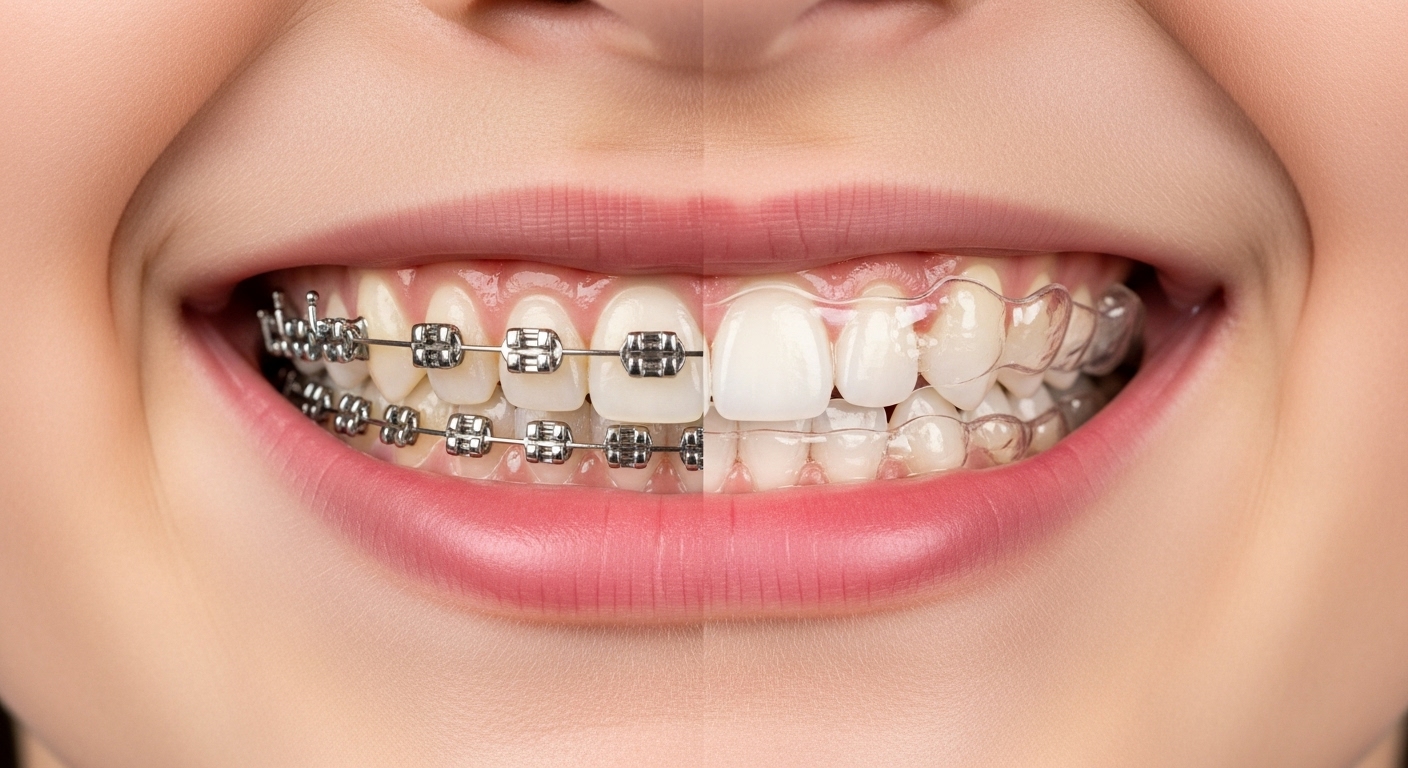Invisalign vs. Braces in NYC: The Complete Comparison
Choosing an orthodontic treatment is a significant decision. For decades, traditional braces were the only path to a straighter smile. Today, modern alternatives like Invisalign have revolutionized orthodontics, especially for adults in a dynamic city like New York. So, how do you choose between these two excellent options? This detailed comparison will help you decide.
The Traditional Option: Braces
Braces are the most well-known orthodontic technique. The system uses brackets bonded to each tooth, connected by a metal archwire that exerts precise forces to guide them into alignment.
The Different Types of Braces
- Metal Braces: The classic, robust, and often most cost-effective solution. Today's metal braces are smaller and more comfortable than ever before.
- Ceramic Braces: More discreet, their brackets are made of a clear or tooth-colored material. They are a popular aesthetic option but can be slightly more fragile than metal.
- Lingual Braces: Placed on the back of the teeth, making them completely invisible from the outside. This is the most discreet but also typically the most expensive option.
The Modern Alternative: Invisalign Clear Aligners
Invisalign treatment is a fundamentally different approach. It uses no brackets or wires. Instead, it relies on a series of custom-made, medical-grade plastic aligners that are virtually invisible. Each aligner is worn for 1-2 weeks, making small, incremental tooth movements until the final desired position is achieved.
Invisalign vs. Braces: A Head-to-Head Comparison
To make the right choice, let's compare the two systems on the criteria that matter most.
Aesthetics: The Visibility Factor
Invisalign holds a clear advantage here, as the aligners are transparent and barely noticeable. This is a major reason for its popularity among professionals. Lingual braces are the only truly invisible option, while ceramic braces offer a discreet fixed alternative. Metal braces are the most visible. More details can be found in our "What is Invisalign?" guide.
Lifestyle & Convenience: A Deciding Factor in NYC
This is where Invisalign truly shines for those with a busy schedule. Because the aligners are removable, there are zero dietary restrictions—you can continue to enjoy all your favorite foods. Furthermore, orthodontic check-ups are often less frequent (every 8-12 weeks vs. 4-8 weeks for braces) and many top NYC practices offer virtual monitoring to further reduce in-office visits.
Oral Hygiene: Ease of Cleaning
Advantage Invisalign. Maintaining excellent oral hygiene is simpler because you remove the aligners to brush and floss as you normally would. Cleaning around the brackets and wires of braces requires more time and special tools, which can increase the risk of plaque buildup if not done diligently.
Comfort: The Feel of the Appliance
Invisalign aligners are made of smooth plastic, eliminating the metal-on-soft-tissue irritation that can occur with braces. While patients may feel pressure when switching to a new aligner (a sign the treatment is working), it's generally considered more comfortable than the periodic tightening of braces. Learn more about discomfort with Invisalign.
Effectiveness & Treatment Cases
Both treatments are highly effective when managed by a skilled orthodontist. Historically, braces were the default for very complex cases. However, thanks to technological advancements like SmartTrack material and the use of attachments, experienced Invisalign providers can now successfully treat a vast majority of complex malocclusions, including severe crowding and bite issues.
Cost & Insurance
The cost can be surprisingly similar. While metal braces are often the most affordable starting point, the cost of Invisalign is now frequently comparable to that of ceramic braces. The final price for either depends on the complexity and length of your treatment.
Conclusion: Which Treatment is Right for You?
The "best" treatment is the one that fits both your clinical needs and your lifestyle.
- Choose Invisalign if: Aesthetics, flexibility, and convenience are your top priorities. You are disciplined enough to wear your aligners 20-22 hours a day.
- Choose Braces if: You prefer a "set it and forget it" approach where compliance is not a daily concern, or if your budget is the primary deciding factor (metal braces).
The most crucial step is a consultation with an experienced orthodontist. They will perform a thorough evaluation and discuss the pros and cons of each option as they apply specifically to you, helping you make the best choice for your smile in New York City.
Ready to Discuss Your Options in NYC?
Use our interactive map to find a certified orthodontist in your neighborhood for a personalized consultation.
Find a Provider in NYC
